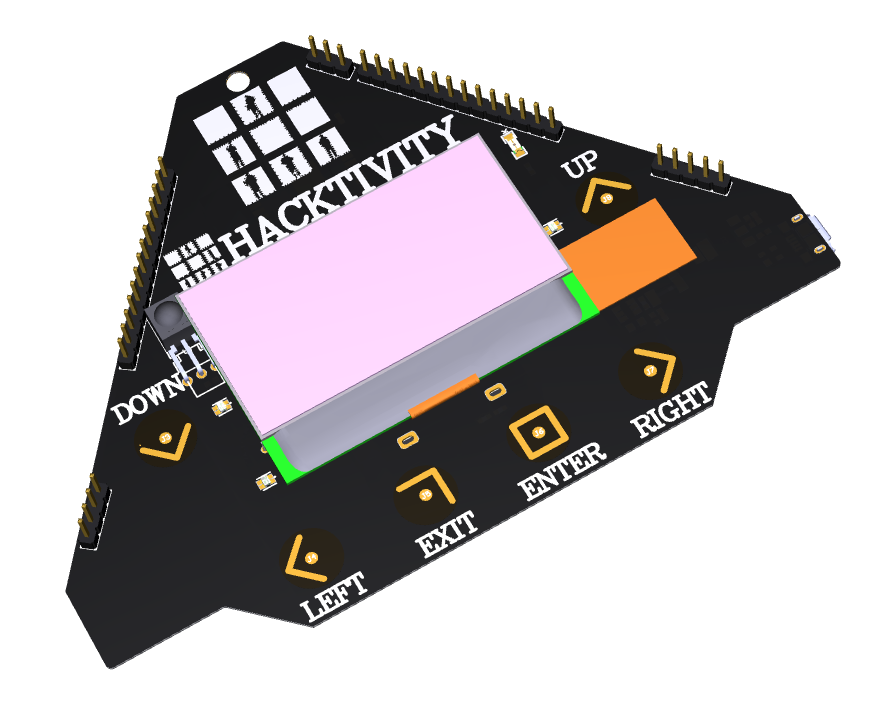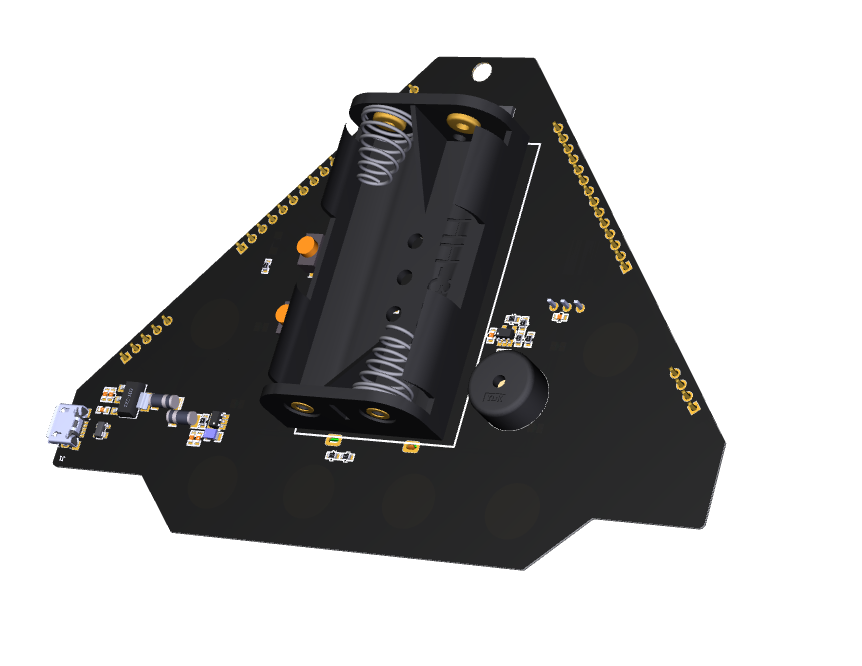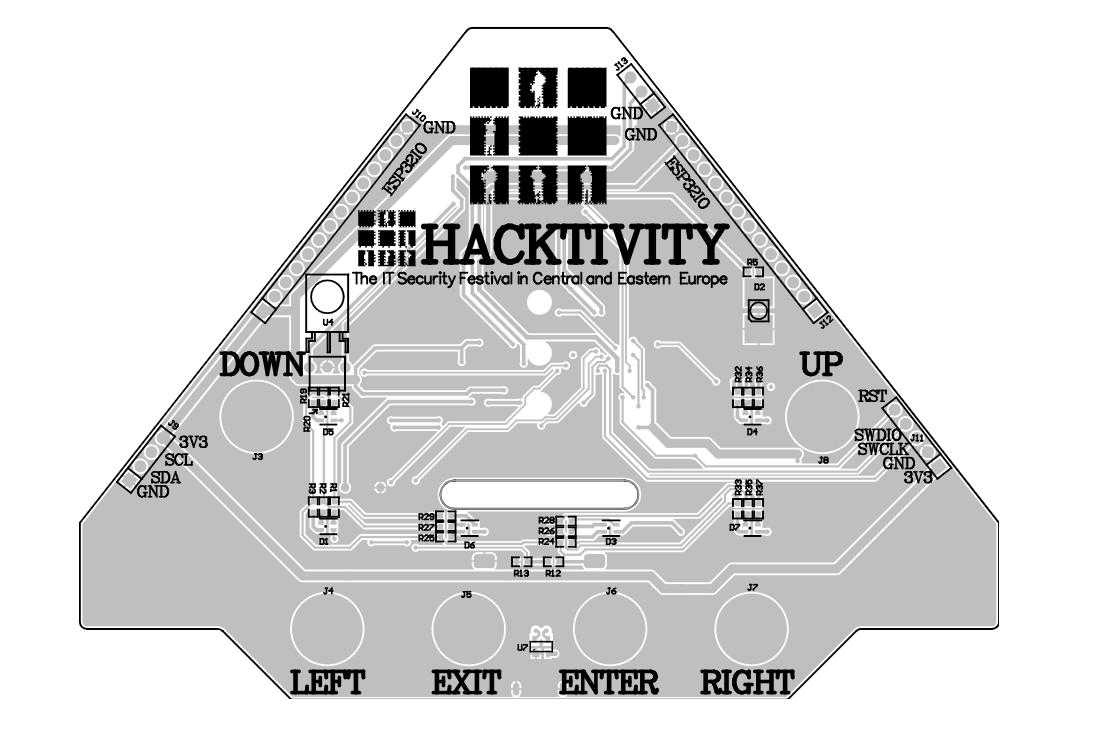After the successful first Hacktivity badge in 2018, organizers of the conference have reached huge step forward: thanks to the Cyber Risk Services team of Deloitte Hungary, EVERY TICKET BUYER will receive a cool electronic hardware-hacking badge while the stock lasts!
Seasoned hardware hackers will hopefully find this a nice way to tease their minds, while beginners will have the opportunity to visit the HackCenter at #Hacktivity2019 to learn the necessary bits of knowledge to tackle the challenges. In the end, we aim to get a nice piece of hardware into the hands of the visitors and a feeling of success on their minds.
About the Hacktivity Badge in 2019:
- Runs MicroPython
- Has connectivity over USB, WiFi and IR
- Will have an appstore for its users
- Looking cool
- Everyone will talk about it at the conference
Features
- 6 touch buttons
- 128×64 LCD screen
- 6 RGB LEDs
- IR transmitter and receiver
- Buzzer
- WiFi
- USB serial connection

What can the audience do with it?
- Have it show their (nick)name
- Install apps from the hatchery
- Program their own apps easily in MicroPython
- Take part in various challenges created by HackerSpace Budapest
- Take part in interactive voting during the conference talks
Technical details
#Hacktivity2019 badge runs MicroPython on ESP32.
Audience can use the previously mentioned functionalities to write their own applications. There will be an application distributing server, a Hatchery, set up for #Hacktivity2019.
People can develop apps via MicroPython command line, and once their application is ready, they can upload it to the Hatchery as an egg, and every badge will be able to download it and run!

Majority of the badge’s functionality is available via the badge module. People can import it, and use the following hardware elements:
- LEDS
- BUTTONS
- SCREEN with backlight (can display text, shapes, images)
Power:
All badges run on two AA alkaline 1.5V batteries. Internally their voltage is stepped up to make sure badge makes use of all the power in them.
Buzzer:
Badge’s piezobuzzer, placed on one eye, can be used to produce sound with Micro Python commands.


Flash memory:
The badge offers a non-volatile memory for storing strings, 8bit and 16bit numbers. This is meant for storing small setting values (not long configuration files). Once written it will persist through power loss and OTA software update. Value is located in the memory in groups, so to set and retrieve you need to provide a group name, and the variable name. If on, the setting group and/or variable do not exist, they will be created.
WiFi:
The badge has a WiFi chip, but it is supposed to work in bursts, not to consume the batteries too fast, or crowd the network. The badge is pre-configured to use the event’s wireless network, but that can be changed via software.
There are two ways to use the WiFi: the wifi module, and the easy wifi module. Both require enabling/initing, and can be called to connect to either default or specific wireless 2.4GHz network. Note that those modules just manage the connection, not sending or receiving data.

